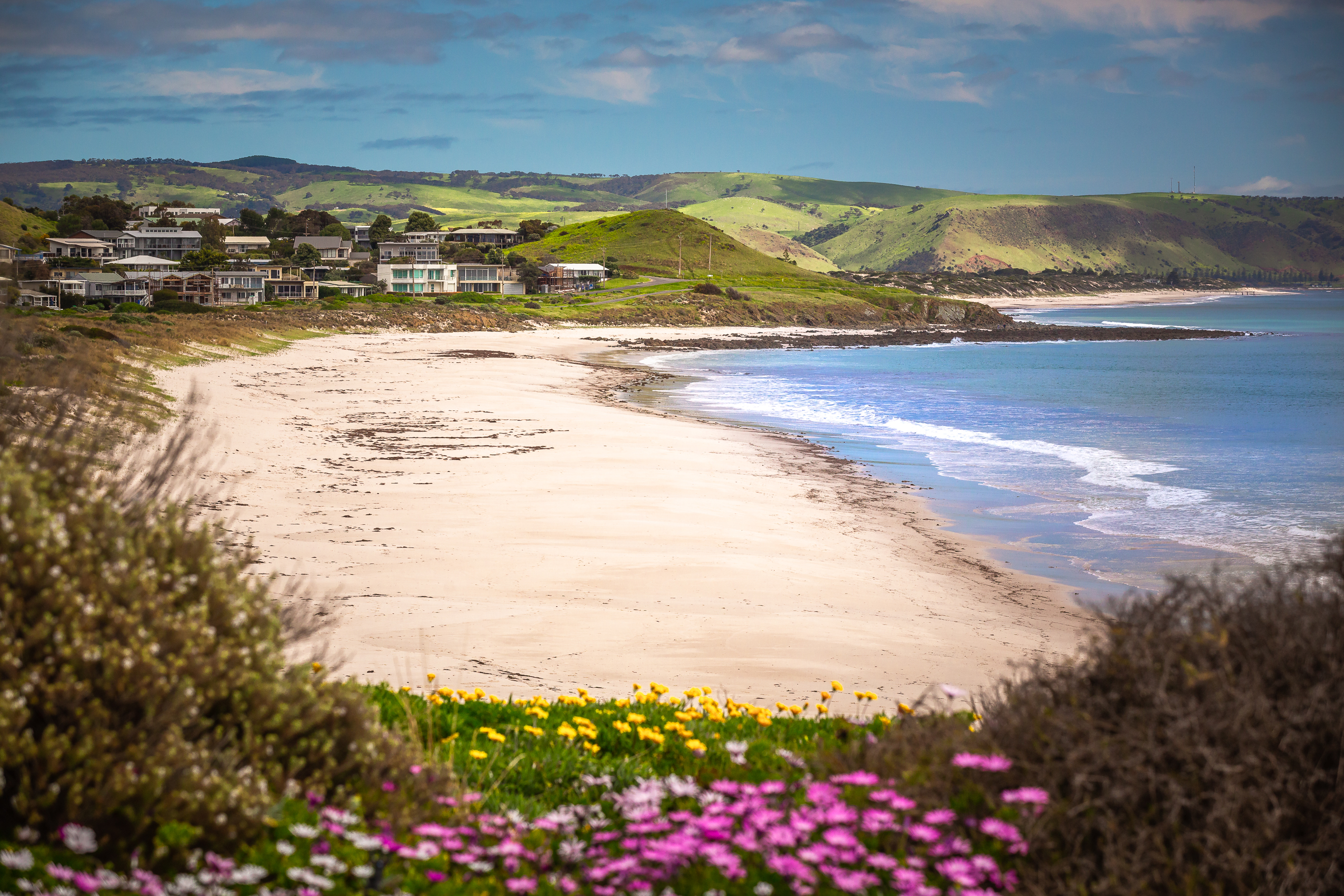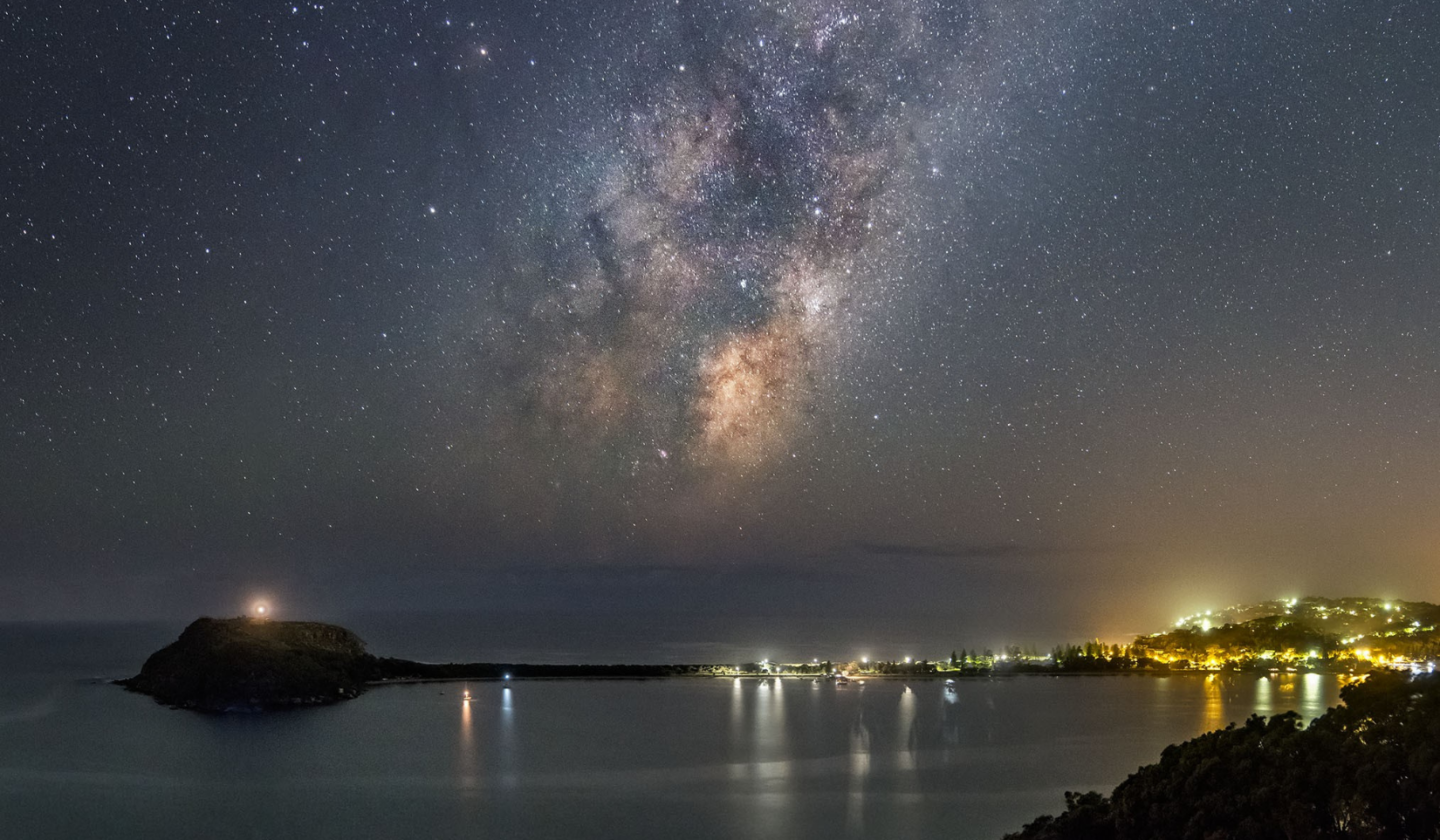
Carrickalinga becomes Australia’s first International Dark Sky Community

South Australia, Australia
Carrickalinga, a small coastal town on the Fleurieu Peninsula in South Australia, has been certified as an International Dark Sky Community by DarkSky International (DarkSky). This is a wonderful and important achievement not only for protecting our exquisite night sky but because of the enormous potential for educating our local and wider communities about light pollution. This international endorsement of efforts by the local community to protect and celebrate the natural night sky brings us great pleasure and pride, and we look forward to working with residents, visitors, businesses and governments alike to continue this important journey together.
The Carrickalinga community is currently made up of over 400 permanent residents and swells with thousands of holidaymakers who visit each year, especially in summer. Just far enough away from the glow of major city Adelaide and separated by a range of hills, Carrickalinga has very few streetlights and is a community that treasures the dark starry skies.
Carrickalinga lies on an alluvial coastal strip between the sea and rocky ranges, with the majority of people living in two sandy bays lightly separated by the rocky outcrop of Haycock Point. It is a place of white sandy dunes and beaches, crystal clear waters, abundant marine life, rock pools and wonderful views of sea and sunset.
The area is home to a rich diversity of native flora and fauna. The creek, estuary and surrounding wetlands and dunes are inhabited by an abundance of birds, including migratory species. These are joined by lizards and snakes, echidnas and microbats, frogs and dragonflies. Dolphins are long-time inhabitants along with all manner fish, molluscs, crustaceans and the extraordinarily beautiful Leafy Seadragon, South Australia’s marine emblem. The dunes themselves are recognised as a geological monument of national heritage significance.
The cultural history and custodianship of the Fleurieu Peninsula goes back many thousands of years and is documented in the oral traditions of the Kaurna, Ramindjeri, Peramangk and Ngarrindjeri peoples. The Kaurna language name for Carrickalinga, Karragadlangga, means red gum firewood place and some beautiful River Red Gums remain today close to creeks and water holes. The dark sky remains important to First Nations cosmologies and astronomy.
Since 2021, the local Carrickalinga community has been working towards achieving certification as a Dark Sky Place. This has included a range of activities: initiating a sky quality metering program; running information stalls at field days and markets; making presentations to community groups and local government meetings; preparing flyers and a video recording; coordinating a Star Party to engage and inspire the wider community; and working with the District Council of Yankalilla to conduct an official community consultation program. The community has also worked with Council to prepare an appropriate Lighting Policy (ordinance) as well as a public lighting design with Greenhill Engineering compliant both with Australian Standards and DarkSky requirements.
The effort to achieve certification for Carrickalinga Dark Sky Community involved the support and hard work of many. Three key contributors have been Sharolyn Anderson, Dr Sheryn Pitman and Professor Chris Daniels, all of whom are very excited about the certification and the consequent journey ahead.
“Designation of Carrickalinga as a Dark Sky Community and the preservation of its pristine night sky will remind residents and visitors alike of our place in the vast universe and foster a deeper connection to nature,” says Sharolyn Anderson, the first to identify Carrickalinga as a potential ‘dark sky Place’. “The reduction of artificial light will benefit wildlife conservation efforts and create a sanctuary for diverse ecosystems to thrive under the uninterrupted cloak of darkness.”
Long-time Carrickalinga local, environmental scientist and educator, Dr. Sheryn Pitman, is delighted! “In a world of diminishing dark and starry skies, we are thrilled to have achieved this certification for a place we hold close to our hearts” said Sheryn. “For over 50 years I have viewed the night skies of Carrickalinga with awe and wonder, and they’ve played a key role in helping me gain perspective on the unique value of our planet and my place on it. To be able to do something valuable to address light pollution and protect the magnificence of the night fills me with hope.”
Dedicated environmental advocate Professor Chris Daniels, considers this to be a truly remarkable achievement. “As a zoologist and environmentalist focusing on people’s connection with nature, my usual day involves dealing with the seemingly never-ending backward steps our communities take in connecting with our natural world,” says Chris. “However, this is an incredibly positive step forward. The community of Carrickalinga is the first in Australia to recognise our very real need to see and enjoy the starry sky at night, and the importance of the night sky for the health and wellbeing of our nocturnal animals. Carrickalinga chose to make a difference by embracing the dark sky ambition and over the last three years the town community committed itself to delivering a night full of stars. Today this dream is a reality. Carrickalinga will now serve as a model for others to follow.”
“Through lighting retrofit and outreach actions initiated as part of the certification process, community residents and visitors can learn about best practices for outdoor lighting at night. Lighting retrofit projects provide a visual demonstration of what quality outdoor lighting looks like, which is not something most people think about until they see it. It is exciting to see projects that benefit the wider community and that serve as inspiration for change at the individual level. We look forward to seeing the progress of lighting changes and continued outreach and education in Carrickalinga,” remarked Amber Harrison, International Dark Sky Places Program Manager.
The Carrickalinga community, led by the Carrickalinga Ratepayers Association, hopes to use this achievement as a springboard to inspire the wider community to learn about light pollution and expand dark-sky friendly lighting practices. Bringing the wider community along on the journey will always be a priority for the protection of night skies over the longer term. There is great potential for Carrickalinga to become an astro-tourism destination, and to highlight important First Nations stories and knowledge of night skies.
About the International Dark Sky Places Program
Founded in 2001, the International Dark Sky Places Program is a non-regulatory and voluntary program encouraging communities, parks, and protected areas worldwide to preserve and protect dark sites through effective lighting policies, environmentally responsible outdoor lighting, and public education. When used indiscriminately, artificial light can disrupt ecosystems, impact human health, waste money and energy, contribute to climate change, and block our view and connection to the universe. Carrickalinga, Australia now joins more than 210 Places that have demonstrated robust community support for dark sky advocacy and strive to protect the night from light pollution. Learn more by visiting www.darksky.org/conservation/idsp.
About DarkSky International
The mission of DarkSky is to preserve and protect the nighttime environment and our heritage of dark skies through environmentally responsible outdoor lighting. Learn more at darksky.org
Media Contacts
Amber Harrison
Dark Sky Places Program Manager, DarkSky International
+1 (520) 347-6363; [email protected]
Dr. Sheryn Pitman
Carrickalinga Dark Sky Community volunteer (in Australia)
+61 (0) 499 903 390; [email protected]
Sharolyn Anderson
Carrickalinga Dark Sky Community volunteer (in USA)
+1 (720) 212-5385; [email protected]

















